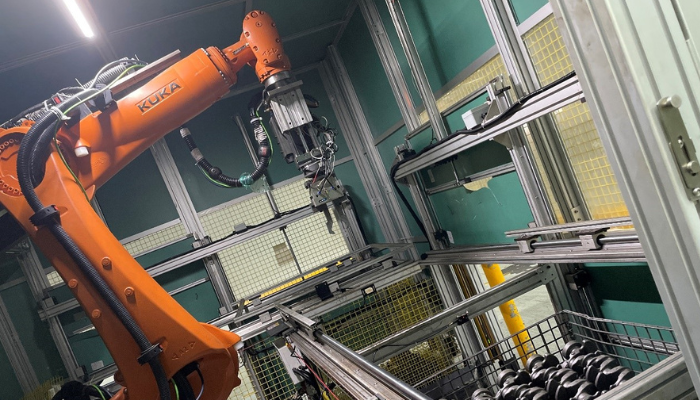NEW CASE: INTEGRATION IN A MAJOR CAR MANUFACTURING COMPANY
March 03rd, 2023

Our partner in China has implemented a complete SCAPE Bin-Picking System for handling different crankshaft products at a well-known automobile manufacturing company. The shape and sizes of the crankshafts vary depending on the vehicle type.
Traditionally, the crankshaft feeding method to the production line is done by manpower with simple auxiliary equipment due to the significant weight of the crankshaft, ranging between 10-20 kg per part, resulting in low handling efficiency. At the same time, the manual handling process is unsafe and detrimental to the workers' health.
In this case, the company wants to improve the working environment and increase productivity by automating the handling process of crankshafts, which come in different shapes, with different surfaces, weight, and sizes.
THE SOLUTION
The handling process of the crankshaft is carried out with the complete, modular, and reliable SCAPE Bin-Picker Solution.

In this project, the equipment provided by us includes SCAPE Bin-Picking Manager™, SCAPE Part Training Studio™, SCAPE Calibration Manager™, SCAPE Communication Server™, SCAPE Part Turner, SCAPE Grid Scanner, and SCAPE Tool Unit & Gripper.
The SCAPE Grid Scanner, mounted on the robot arm, recognizes the crankshafts in the container, and the SCAPE Bin-Picker Manager identifies the item to be picked in the container by the robot. The crankshaft goes to a part-turner for orientation control before the part is re-gripped and delivered 100% precisely in the production line.
By using the cost-efficient SCAPE Grid Scanner mounted on the robot arm, the Bin-Picking solution becomes highly flexible since the robot will be able to pick different types of crankshafts from several different bins and their position as long as the robot can reach the bins. With this configuration, an average cycle time of 44 seconds can be achieved.
See the video here:
